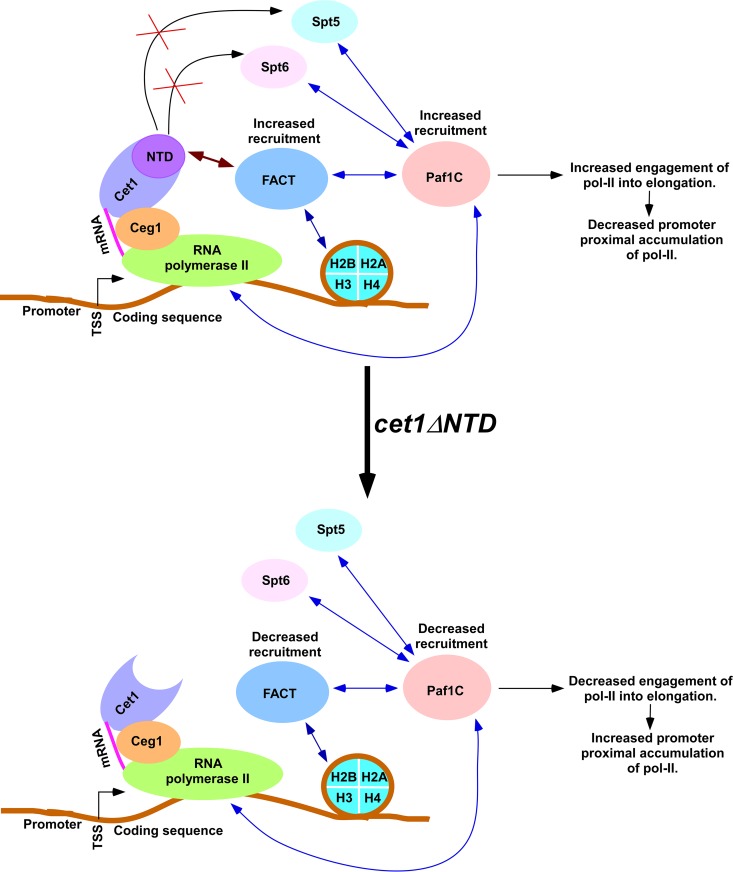FIG 7.
Schematic diagram showing how Cet1's NTD impairs promoter-proximal accumulation/pausing of Pol II. Cet1, which associates with Pol II via Ceg1 (35) following PIC formation and transcriptional initiation (61, 62), interacts with FACT via the NTD (Fig. 2A to E) and facilitates its targeting to the active gene in an mRNA-capping activity-independent manner (Fig. 1B to F and 3A to F). In addition, FACT also interacts with histones, and such interaction is responsible for chromatin association with FACT (15–17, 22, 23). Thus, Cet1's NTD and histones synergistically target FACT to the active gene. In the absence of Cet1's NTD, FACT targeting to the active gene is significantly decreased (Fig. 1B and 3B and D). Decreased association of FACT reduces Paf1C recruitment (Fig. 5H to K). Thus, Cet1's NTD facilitates targeting of the Paf1C via FACT (Fig. 5H to K) but not Spt5 and Spt6 (Fig. 6A to D). Paf1 promotes transcriptional elongation (33, 40) (Fig. 5D to F). Hence, loss of Cet1's NTD reduces recruitment of the Paf1C via FACT, leading to increased accumulation/pausing of Pol II at the promoter-proximal site. Like FACT, Bre1 (an E3 ubiquitin ligase for histone H2B ubiquitylation) is also involved in Paf1 recruitment, independently of Pol II (63–65). The double-headed arrows indicate interactions.

